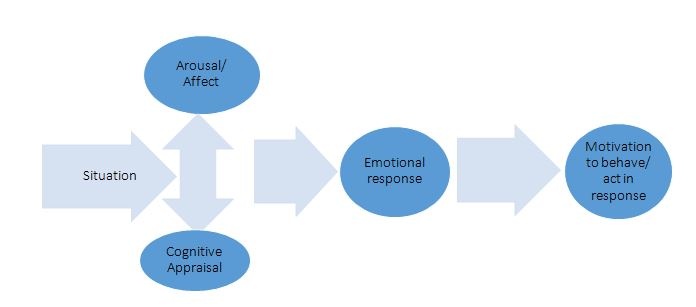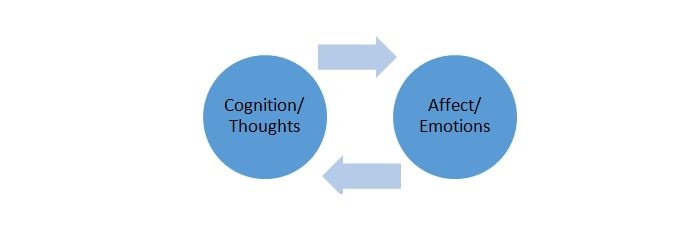 The longer we do market research, the more convinced we are that respondents in our studies are telling us what they think sounds good and explains their behavior. But respondents may not have the ability to explain how and why they make decisions. As market-research practitioners, we’re convinced that our industry is too focused on analyzing what people say rather than identifying the affective or emotional responses that may really drive their behavior.
The longer we do market research, the more convinced we are that respondents in our studies are telling us what they think sounds good and explains their behavior. But respondents may not have the ability to explain how and why they make decisions. As market-research practitioners, we’re convinced that our industry is too focused on analyzing what people say rather than identifying the affective or emotional responses that may really drive their behavior.
Emotions are hardwired into us
Emotions are a large part of who we are and we can’t escape them—they’re hardwired into us with neural and neurochemical mechanisms (LeDoux & Phelps, 2008). These processes must be an integral part of life because they extend beyond our species to those of most birds and mammals (Buck, 1999). Academics believe that emotions have an evolutionary basis (Ekman, 1994) because they’re closely linked to specific actions such as escaping/avoiding (as in the case of fear), withdrawing (as in the case of sadness), fighting (as in the case of anger), and engaging (as in the case of happiness and love).

Emotions are so hardwired into us that that we have to expend energy to regulate them, which has led to a plethora of research on emotional intelligence (Salovey, Detweiler-Bedell, Detweiler-Bedell, & Mayer, 2008). Emotional intelligence involves being able to regulate one’s own emotional responses to the situations and people around us. One can regulate emotions by utilizing various strategies such as selecting which situations we put ourselves into, determining what things we pay attention to, changing our initial evaluations of people/situations, and using various strategies to cope (e.g., exercise, relaxation) (Gross, 2008).
Which comes first? Thoughts or emotions?
Because emotions and thoughts are so interconnected, there may be times when our emotions guide our thinking and vice versa. It’s possible that sometimes we don’t know what we think about something and our affective response determines the thoughts that occur. In fact, our emotional brain may be guiding our thinking long before we have any clear thoughts. Academic research has shown that mild positive feelings lead to a greater recollection of positive thoughts (Isen, Shalker, Clark & Karp, 1978). These findings have fueled the Positive Psychology movement, which asserts that thinking positive thoughts leads to positive emotions and greater well-being.

An example from market research: How emotional reactions predicted the end result
Given the interconnection between “thoughts” and “feelings,” and the fact that our emotions may be guiding our behavior, we have explored this issue in greater depth. We conducted a project where we had respondents try a new product in their home for a month. We first invited them to an initial interview and had them smell the product and discuss their reaction to it. We analyzed their immediate emotional reactions, their top of mind reactions to it, as well as their numerical ratings of appeal. We then sent them home with the product and had them log into a discussion forum several times a week and tell us how they liked actually using it.
We discovered that the initial emotional reaction measured using facial recognition and emotion detection software was not always directionally consistent with what they verbally articulated about the product. It was however, highly predictive of product acceptance. People claimed that they liked the product, often gave it high ratings, and claimed it smelled good to them. But several respondents showed signs of disgust, surprise, or sadness on their faces. Over the course of the study, the initial negative reaction of these participants was eventually expressed in their verbal feedback. These individuals eventually reported that they disliked the scent. And those who showed sadness eventually explained that the scent was not strong enough. If we had just analyzed their initial emotional response, we would not have been able to accurately predict product usage.
In other studies, we’ve observed similar findings. Although respondents claimed they had a preference for a specific aisle of a grocery store in a control versus test situation, their nonverbal behavior didn’t indicate that at all. And in fact, their purchases and emotional responses were the same for the preferred and non-preferred aisles. Thus, the emotional responses that people have to products and situations, may be telling us the true story. And their verbal feedback may be irrelevant or even misleading.
Conclusions
Emotional expressions provide a great deal more information than we currently obtain from just self-reported behavior. And more importantly, emotions may be driving decision making in ways that we as human beings and as market researchers are not fully realizing.
References
Buck, R. (1999). Biological affects: A typology. Psychological Review, 106, 301-336.
Ekman, P. (1994). Strong evidence for universals in facial expression: A reply to Russell’s mistaken
critique. Psychological Bulletin, 115, 268-287.
Gross, J. J. (2008). Emotion regulation. In M. Lewis, J. M. Haviland-Jones
& L. F. Barrett (Eds.), Handbook of Emotions (pp. 497-512). New York: Guilford Press.
Isen, A. M., Shalker, T., Clark, M. S., & Karp, L. (1978). Affect, accessibility of material and behavior:
a cognitive loop? Journal of Personality and Social Psychology, 36, 1-12.
LeDoux, J. E & Phelps, E. A. (2008). Emotional networks in the brain. In M. Lewis, J. M. Haviland-Jones
& L. F. Barrett (Eds.), Handbook of Emotions (pp. 159-179). New York: Guilford Press.
Salovey, P., Detweiler-Bedell, B.T., Detweiler-Bedell, J. B. & Mayer, J.B. (2008). Emotional intelligence.
In M. Lewis, J. M. Haviland-Jones & L. F. Barrett (Eds.), Handbook of Emotions (pp. 497-512).
New York: Guilford Press.
About Beall Research, Inc.
Beall is a boutique firm specializing in both qualitative and quantitative strategic market research. At Beall, we don’t just gather data; we use market research to answer the strategic questions that drive business decisions. We look at the world differently than most market researchers because we are psychologists, anthropologists, historians, economists, mathematicians, and sociologists. And we use theoretical backgrounds to frame insights that help solve real-world problems. As a result, we design and analyze research studies differently. Our insights drive major changes for organizations.


